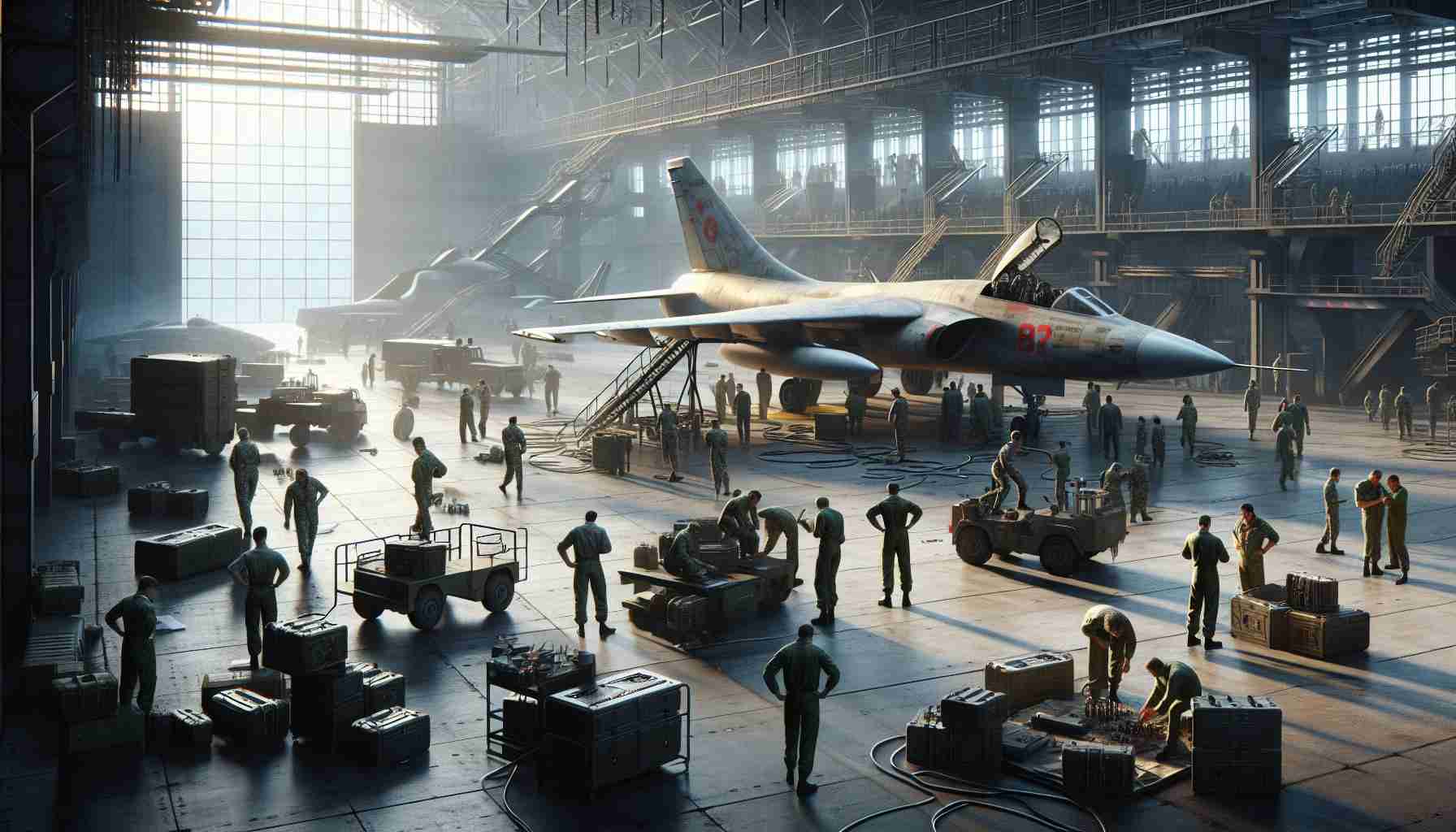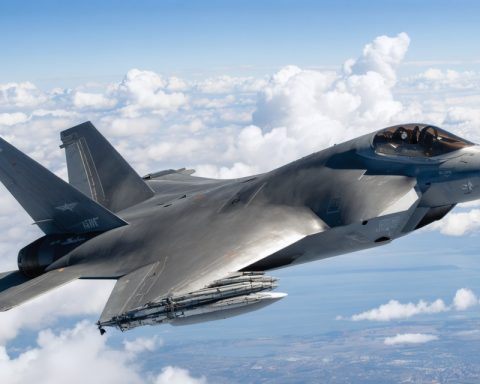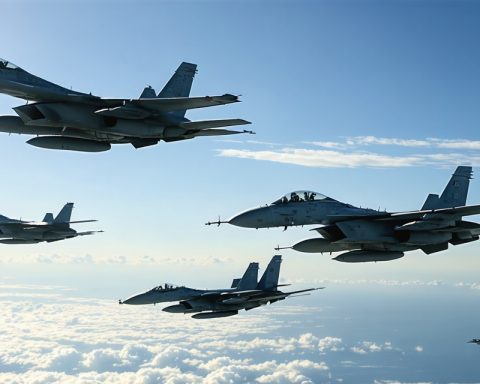The Future of Singapore’s Fighter Fleet
Lockheed Martin has clinched a monumental contract modification valued at $8.7 million with the Republic of Singapore Air Force (RSAF), boosting its ongoing defense collaboration. This deal is not simply a routine enhancement; it is a critical initiative aimed at maintaining the competitive edge of Singapore’s F-16 fighter fleet amidst escalating tensions in the Indo-Pacific.
With this latest contract, the partnership’s total escalates to a remarkable $1.1 billion. This investment underscores the importance of state-of-the-art upgrades to Singapore’s national security framework, emphasizing the elevated role of Lockheed Martin in reinforcing U.S. alliances in Asia.
Scheduled for completion by September 2027 at Lockheed’s Fort Worth facilities, these upgrades are designed to ensure the RSAF can effectively address emerging challenges and threats.
As part of the U.S. Foreign Military Sales program, this strategic enhancement aligns closely with American interests in maintaining regional stability. Singapore’s F-16 fleet, comprising advanced Block 52+ variants, is equipped with an array of sophisticated technologies, ensuring supremacy in air combat operations.
Adaptations extend beyond mere avionics; crucial systems have been upgraded for complex operational demands. Coupled with advanced weapons and electronic warfare capabilities, the RSAF is committed to ensuring its F-16s are poised for future conflicts, reinforcing their position as a dominant air power in the region.
Broader Implications of Singapore’s Fighter Fleet Enhancements
The recent enhancements to Singapore’s F-16 fighter fleet illuminate profound implications for regional stability and geopolitical dynamics in the Indo-Pacific. As nations grapple with escalating tensions, particularly in maritime disputes and territorial claims, Singapore’s commitment to bolstering its air power signifies a broader arms race that could involve neighboring countries. Military investments like these have a ripple effect, prompting other nations to reevaluate their defense strategies and capabilities, which can ultimately lead to a more militarized region.
From a cultural perspective, the advancements in military technology also reflect a societal trend toward prioritizing national security amidst growing uncertainty. Public discourse around defense spending and military readiness is likely to become a central theme in Singaporean politics, affecting the populace’s views on security and international relations.
Moreover, the environmental ramifications of such military developments cannot be overlooked. Increased military activities often lead to higher carbon footprints and resource consumption. As more nations engage in arms modernization, the environmental impact may lead to calls for higher accountability and sustainable practices within military frameworks.
In the long term, we may witness a shift in the global economy as countries intensify defense contracts and partnerships, reinforcing the notion that military expenditure is a vital component of economic resilience. As technological advancements continue, the balance of power may favor nations that invest wisely in defense technology, fostering a competitive landscape that could redefine alliances in the 21st century.
Unlocking the Skies: The Future of Singapore’s Advanced Fighter Fleet
The Future of Singapore’s Fighter Fleet
In a significant move for its military modernization, the Republic of Singapore Air Force (RSAF) is set to enhance its fighter capabilities through a new contract modification with Lockheed Martin worth $8.7 million. This agreement is part of a larger commitment to bolster the RSAF’s F-16 fleet, which plays a pivotal role in maintaining Singapore’s security and strategic operations in the increasingly volatile Indo-Pacific region.
Key Features of the Upgrade
The latest enhancements will not only upgrade the existing avionics but also incorporate cutting-edge technologies designed for superior combat readiness. The RSAF’s F-16 fleet, primarily consisting of advanced Block 52+ variants, will see improvements in several systems:
– Avionics Modernization: Upgraded control and display systems to enhance pilot situational awareness.
– Weapons Integration: Enhanced compatibility with advanced munitions, expanding operational capabilities.
– Electronic Warfare Systems: New tools for defensive measures against potential threats in air-to-air and air-to-ground combat.
These improvements are critical as they ensure that the F-16s are equipped to counter multi-domain threats effectively.
Pricing and Investment
This contract brings the total investment in the RSAF’s fleet modernization through Lockheed Martin to an impressive $1.1 billion. Such significant funding reflects Singapore’s ongoing commitment to preserving national security and reinforcing its defense alliances, particularly with the United States through the Foreign Military Sales program.
Strategic Relevance and Regional Stability
The upgrades serve not only Singapore’s defense capabilities but also align with U.S. interests in promoting regional security. As tensions rise in the Indo-Pacific, fortified air power acts as a deterrent and contributes to stability among U.S. allies.
Pros and Cons of the F-16 Fleet Upgrades
Pros:
– Enhanced operational capabilities and readiness.
– Improved technology for combat effectiveness.
– Strengthened defense alliances with the U.S.
Cons:
– High costs associated with continuous upgrades.
– Dependence on bilateral defense ties may limit independent operational flexibility.
Future Predictions for RSAF’s F-16 Fleet
With scheduled completion of these upgrades by September 2027, the RSAF aims to maintain its status as a leading air power in the region. Emerging technologies will likely dictate future military capabilities, necessitating ongoing investments and adaptations to remain ahead of potential threats.
Conclusion
Singapore’s proactive approach to its F-16 modernization through Lockheed Martin highlights the nation’s dedication to maintaining a formidable defense posture amid evolving security challenges. As the landscape of air warfare continues to change, these upgrades will ensure that the RSAF remains prepared for future conflicts, emphasizing the critical nature of strategic partnerships and technological investments.
For further insights into defense strategies and capabilities, visit Lockheed Martin.












